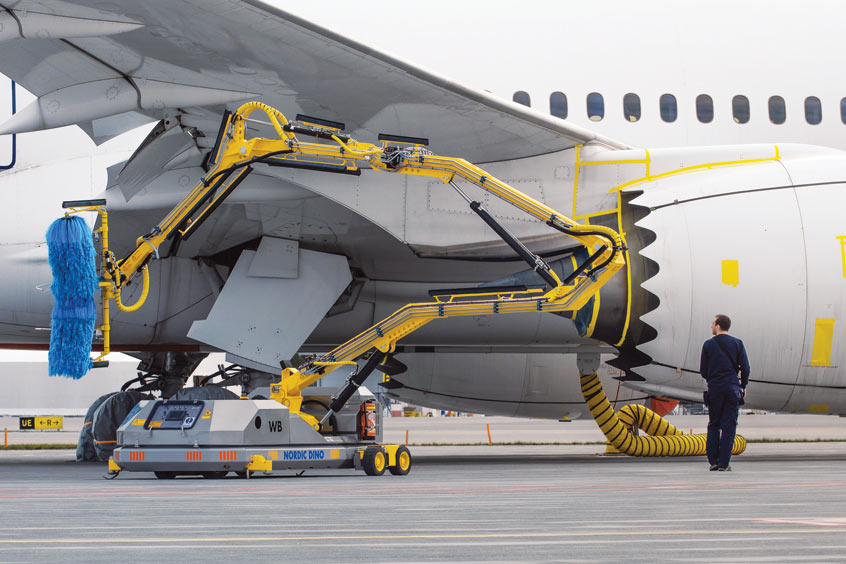ACE 2026 - The home of global charter.
 The bimonthly news publication for aviation professionals.
The bimonthly news publication for aviation professionals.

In the quest for greater sustainability, should we consider the aerodynamic effect of dirt on an aircraft? And if so, just how does a clean aircraft generate greater fuel savings?
Aviator Robotics is the designer and manufacturer of Nordic Dino, an advanced semi-automated aircraft exterior cleaning technology, and a family member of Avia Solutions Group. CEO Jan Brunstedt says: “The results are already there to be seen for themselves when it comes to fuel savings generated by clean aircraft. While the science behind the measurement of savings may be somewhat vague, there can be no doubt that a newly cleaned aircraft can generate a saving of approximately 0.5 per cent.”
To illustrate the point, he refers to controlled tests that took place in the 1990s on a McDonnell Douglas MD-80 aircraft. A ninety minute flight was conducted on an aircraft that had only been given a primer coating to its exterior and its fuel consumption was measured. The aircraft was then painted and a flight matching the parameters of the first was made and the fuel consumption again measured. The result showed that the newly painted aircraft consumed 1.5 per cent less fuel than the primed aircraft.
But a newly painted aircraft does not equate with a newly cleaned aircraft, and so Brunstedt offers another test case from the late 1990s: “Two B747s, same age, flew between Amsterdam and New York. One aircraft had been recently cleaned, while the other was due for cleaning the following week. The clean aircraft made a fuel saving of half a ton – or 0.5 per cent - over the uncleaned aircraft.”
He claims the evidence stacks up firmly in favour of a clean aircraft’s greater fuel efficiency
In normal flying conditions, aircraft exteriors gather dirt, but those operating in some geographic locations can accumulate more dirt than others, therefore requiring more frequent cleaning.
In the northern hemisphere, and particularly in locations where harsher winters are experienced, aircraft tend to gather more exterior dirt due to the residue from constant de-icing, sand thrown up from aircraft ramp taxi areas, and the use of de-icer on runways. The cumulative effect of these particular conditions can lead to significant dirt build-up, especially on an aircraft’s lower belly.
In other areas mosquitoes can be a major problem, with insect detritus forming extensive build up, especially on the leading edges of aircraft wings. Without the use of regular washing solutions, these build ups can cause aircraft to need to generate greater thrust, and thus greater fuel usage, during take off, especially when carrying full loads.
These will all take a small but present toll on an aircraft's green impact.
New technologies can influence reduced fuel consumption, for example an aerodynamically efficient film called sharkskin, which is used to coat an aircraft’s leading edges, stabilisers and fins.
In tests involving a Boeing 747-400, sharkskin technology has already demonstrated positive results. Using dedicated fuel analytics to measure any variations in fuel consumption, pre-and post-modification, the application of the technology showed a 0.8 per cent reduction in friction. In real terms, this reduction could account for an annual fuel saving of approximately 300 metric tons and a saving of more than 900 metric tons of CO2 emissions. But it still requires regular cleaning to ensure it retains its effectiveness.
“In the future, there will be many advances towards greater fuel efficiency in the aviation industry,” says Brunstedt. But he cautions that there is always a case for keeping the aircraft clean. “Cleaning an aircraft will help optimise performance and efficiency, and when used in conjunction with other new technologies, it will always have a role to play in generating better performance and greater fuel efficiency on the journey towards more sustainable aviation practices.”